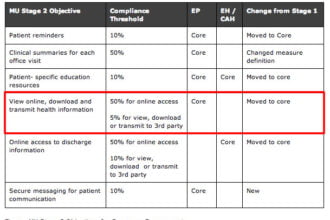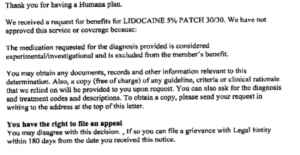A Modern Day Family Doctor Visit
American healthcare is in crisis. Family doctor visit costs are rising.
A Modern Day Family Doctor Visit
American healthcare is in crisis. Family doctor visit costs are rising.
Primary care practices are incurring heavy levels of non-collectable debt, and the percentage is climbing every year. According to MGMA research, average bad debt per FTE physician was $12,679 as of 2010, the most recent data available. According to our calculations, average days in A/R for fee-for-service (FFS) practices currently stand at about 45, average reimbursement rate is 68% and overhead averages 70%. It’s hard to avoid the conclusion that FFS practices are in trouble if something doesn’t change.
Patients are facing higher medical expenses than they ever have before. In fact, according to the Milliman Medical Index, the average family pays $24,671 per year in health insurance premiums.
On top of that, many families face deductibles in the $3,000 to $5,000 range per person, with few able to cover the gap.
Fortunately, primary care physicians are adopting a new model which reduces expenses for patients dramatically and puts practices on a cash-only / direct pay basis that completely takes fee-for-service (FFS) insurance out the picture. No more billing and coding. No more being bullied over pre-approvals and claims. The model, direct primary care, turns primary care practices into cash-positive businesses that work for patients and physicians.
Below, I spell out exactly how one “modern” family saved 37.3% on their annual healthcare costs when their physician switched to a direct primary care model.
The Dunphys – Fee for Service (Obamacare)
I am a fan of ABC’s “Modern Family”. The show focuses upon the Dunphy family, a typical “modern” day family of five living in suburban Los Angeles (90064 zip code). The Dunphys are: Phil (father – age 48, non-smoker), Claire (mother – age 45, non-smoker), Haley (daughter – age 21, non-smoker), Alex (daughter – age 17), and Luke (son – age 16). Claire works for her father who is the owner of Pritchett’s Closets and Blinds. Phil is a successful real estate broker. Each family member gets a yearly physical exam and visits the doctor (on average) twice a year. How would the Dunphys experience our healthcare system today?
For their day-to-day healthcare, the Dunphys see Dr. T, a busy suburban Los Angeles family practitioner. When the Dunphys need to schedule an appointment, it takes 19.8 days (on average) for them to be seen from the time the appointment is made. When they are seen, Dr. T spends 15 minutes in the exam room during their well visits and 10 minutes during their sick visits. Each member of the family receives a yearly physical exam. The Dunphys are insured by Anthem Blue Cross (California) and Dr. T is in their network. Their plan for 2016 is the following:
Plan: Anthem Blue Cross Silver 70
Metal Tier: Silver
Premium (monthly) : $1,370
Deductible: $4,500
Deductible (pharmacy): $500
Primary Care Co-pay: $45
Specialist Co-pay: $70
Emergency Room Co-pay: $250
Out of Pocket Max: $12,500
** The rates of this plan are for the 2016 calendar year and specifically for the 90064 zip code. The premium (and plan offering) will not be the same for every zip code (or State). **
The Dunphys originally purchased their plan for calendar year 2014 on October 1st, 2013. Since then, their total yearly premium cost has increased overall by 21%. Their yearly premium cost for calendar year 2016 went up 7.03% over the previous year. Additional healthcare costs are:
Office Visits (5 visits x cost of co-pay): $225
Prescriptions: $291
The Dunphys spent a total of $225 on their office visits. In addition, the Dunphys spent a total of $291 on their prescriptions. The Dunphys are concerned about their healthcare costs. The Dunphys are pretty healthy (except for minor seasonal allergies) and yet they are accruing a lot of costs. These costs are causing a financial strain for the family.
The Switch to Direct Primary Care
Fortunately for the Dunphys, Dr. T has switched from a FFS practice (accepting insurance) to a direct primary care model (an affordable direct pay model), which should substantially lower their costs. Direct Primary Care (DPC) is a payment model where patients pay their primary care physician directly without using their insurance. Under this model, patients pay an affordable monthly fee (ranges from $10 – $100). As being apart of Dr. T’s DPC practice, the Dunphys specifically experience the following: unlimited visits (no cost per visit fee /co-pay), longer visit time with physician (50 minutes+ each visit), same day or next day appointments, unlimited access to Dr. T (24/7 access via e-mail, text, video chat via telemedicine platform on computer and smart phone), and huge savings on labs and prescriptions.
The Dunphys do not use insurance for any of their visits to Dr. T. However, they have purchased a high deductible policy that they solely use for specialty visits, emergency room visits, or hospitalizations. They were encouraged to purchase this type of plan by Dr. T. and their personal insurance broker in order for them to avoid the tax penalty that they could get for not purchasing health insurance (2016: $695 per individual ($2,085 total cap). Below is what their plan looks like:
Plan: Anthem Blue Cross Bronze 60 HSA
Metal Tier: Bronze
Premium (monthly) : $696
Deductible: $9,000
Primary Care Co-pay: 40%
Specialist Co-pay: 40%
Emergency Room Co-pay: 40%
Out of Pocket Max: $13,000
** The rates of this plan are for the 2016 calendar year and specifically for the 90064 zip code. The premium (and plan offering) will not be the same for every zip code (or State). **
The Dunphys healthcare costs (estimate) are:
Office Visits (5 visits x cost of co-pay): $0
Prescriptions: $54
Summary of Dunphy’s Doctor Visits
FFS DPC
Average Time til Appointment 19.8 days 1 day
Time with Doctor (well) 15 min up to 50
Time with Doctor (sick) 10 min up to 50
Insurance premium (yearly) $16,400 $8,352
Office Visits $225 $0
Membership Fee (yearly) $2,223
Prescriptions (total) $291 $54
Total Expenses $16,956 $10,629
Savings 37.3%
As you can see, transitioning from FFS to DPC offers tremendous benefits to both medical practices and patients. While the transition takes thought and care, ultimately the patients get greater access to care while spending a lot less on the services they receive. Doctors, meanwhile, get to practice their own way again — no more daily battles with insurance companies and the freedom to spend time with patients as they see fit. Direct primary care offers a new mode of primary care which works for patients and doctors, and it’s time that PCPs get involved.
(Authors Note: The family in the article is fake and used for illustrative purposes. They are based on characters of the same name on the hit ABC show “Modern Family”.
——————————————————————————————————
Would you like to see a doctor anytime from the comfort of your own home via your computer or smartphone? Please click Here. If you are a medical provider and are interested in telemedicine, please click Here.
Physicians. Are you tired of filling out paperwork and dealing with insurance companies? Are you tired of seeing you reimbursement and hard earned revenue be cut by insurance companies? Do you want a consistent and dependable revenue stream? Please click Here.
Matthew Taber is Chief Operating Officer of Medical Access USA, a direct primary care program where patients pay their physician directly and in return get unlimited access to care (in person, via e-mail, via smartphone, via computer).
The post Family Doctor Visit Costs appeared first on Medical Access For America – Direct Primary Care.











